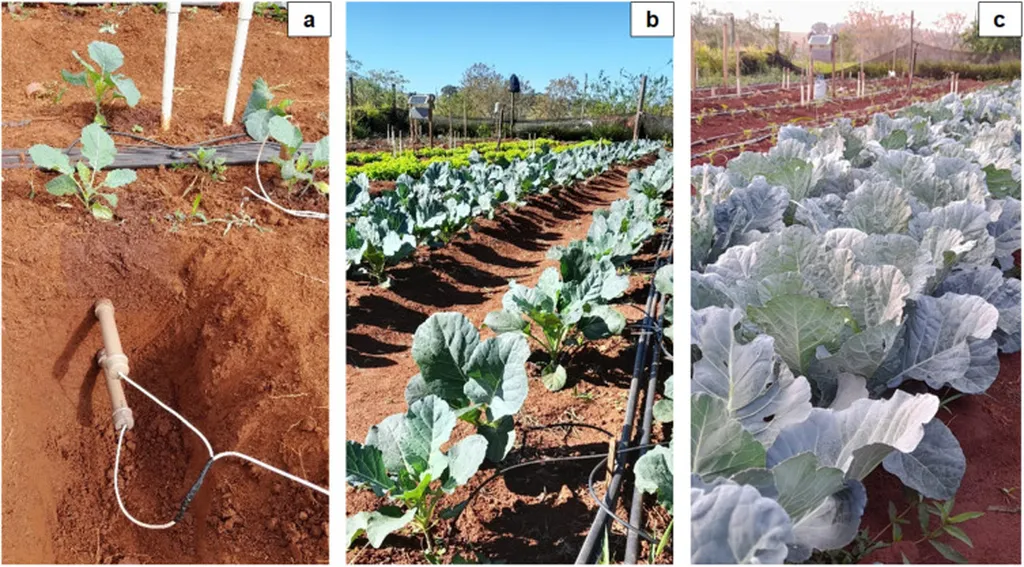In a world where water scarcity is becoming an increasingly pressing issue, farmers are in dire need of cost-effective and efficient irrigation management solutions. A recent study published in *Smart Agricultural Technology* offers a promising alternative to conventional technologies that often remain out of reach for low-income farmers. The research, led by Valdemiro Simão João Pitoro of the Department of Rural Engineering at São Paulo State University (UNESP) and Lúrio University (UniLúrio), focuses on the application of low-cost soil moisture sensors for irrigation management in kale (Brassica oleracea var. acephala) cultivation.
The study developed and evaluated a soil moisture monitoring system using low-cost capacitive sensors (SKU: CE09640) integrated with an Arduino microcontroller. This system features RGB LED alerts to indicate soil water status, making it user-friendly even for farmers with limited technical training. “The simplicity and affordability of this system make it an attractive option for smallholder farmers who often struggle with the high costs and complexity of conventional irrigation technologies,” Pitoro explained.
Field validation was conducted by comparing three irrigation management (IM) strategies: crop evapotranspiration (ETc), tensiometers (IMT), and capacitive sensors (IMC). The sensors were calibrated in the laboratory using the gravimetric method, demonstrating a strong inverse correlation (R < -0.964), high fit (R2 > 0.95), and acceptable accuracy (RMSE < 0.05) in predicting soil moisture compared to the gravimetric method.The experiment followed a randomized block design in a 4 × 3 factorial scheme, with four irrigation levels (50 %, 75 %, 100 %, and 125 % of the irrigation depth estimated by each method). The study evaluated several variables, including the number of commercial (NCL) and non-commercial leaves (NNCL), fresh weight (FMML), number of mature leaves (NML), and water use productivity (WUP).Field validation revealed no significant interaction between factors and similar performance among IM strategies for most variables. However, ETc-based IM showed the highest WUP (12.42 g l-1), followed by IMC (10.95 g l-1), and IMT (9.82 g l-1). This indicates that the SKU: CE09640 sensors enable greater water savings than conventional devices like tensiometers.The findings support the use of SKU: CE09640 sensors as a viable, accessible solution for irrigation management, promoting efficient water use and benefiting smallholder farmers. "This technology has the potential to revolutionize precision agriculture by making it more accessible and user-friendly," Pitoro noted. "It can help farmers optimize water use, reduce costs, and improve crop yields, ultimately contributing to food security and sustainable agriculture."The research highlights the importance of developing low-cost, easy-to-use technologies that can be widely adopted by farmers, particularly in low-income regions. As the agriculture sector continues to grapple with water scarcity and the need for sustainable practices, innovations like these are crucial. The study's findings could pave the way for future developments in precision agriculture, making it more inclusive and effective for farmers around the world.The study, published in *Smart Agricultural Technology*, was led by Valdemiro Simão João Pitoro, affiliated with the Department of Rural Engineering at São Paulo State University (UNESP) and Lúrio University (UniLúrio). This research not only addresses immediate needs but also sets the stage for a more sustainable and equitable future in agriculture.

